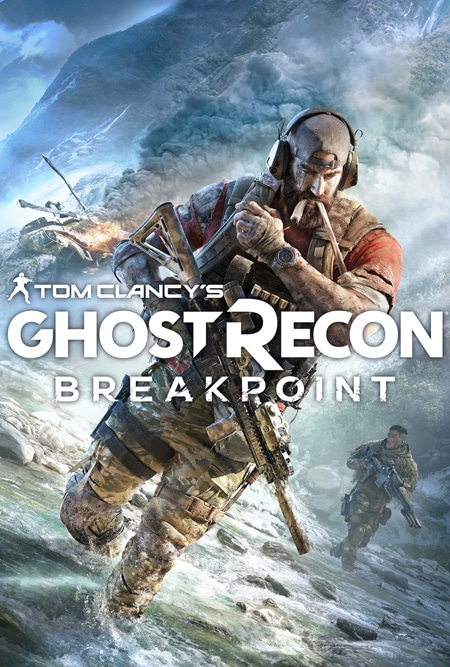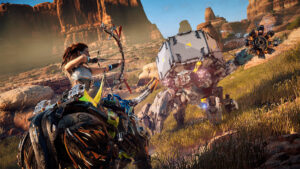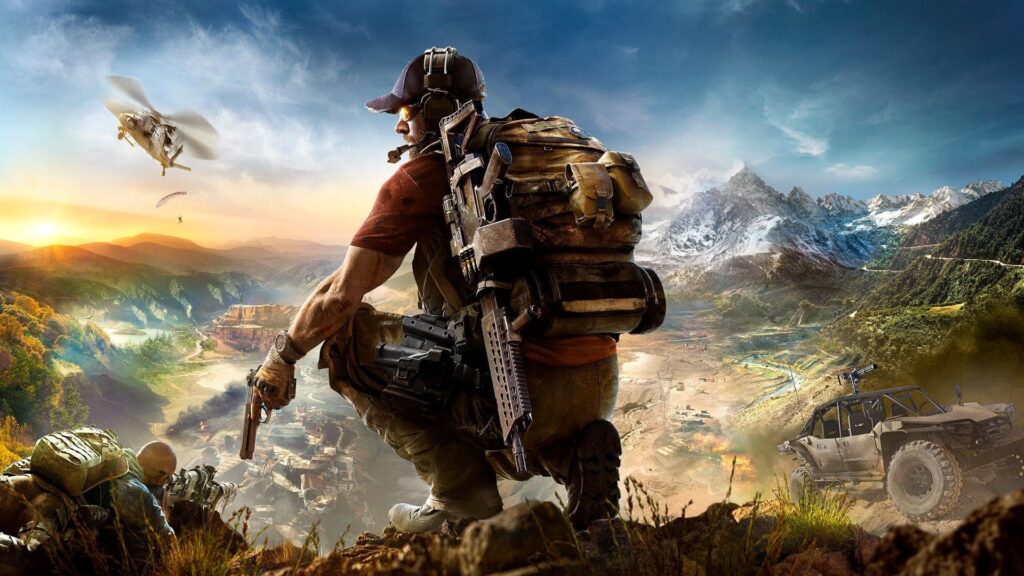
After 42 hours, 1,415 enemies, and 17,644 bullets, I have completed Ghost Recon: Wildlands’ campaign and hit the level cap. I also crashed some helicopters, which may or may not have led to the accidental deaths of my fellow IGN teammates. That’s classified.
Powered by Decima
Wildlands’ map is, outside of MMOs, the largest I’ve seen in a game in a long time. If you played the beta (6.8 million of you did), you were restricted to only one province; the final game includes more than 20 provinces, some smaller, some larger, all packed with things to do. Each area includes at least one Santa Blanca Cartel boss, hidden weapons and attachments, enemies to interrogate, fast-travel locations, skill points and resources, commendation medals, bases to raid, and more. If you want a game that’ll keep you busy for a while, Wildlands absolutely has your back.
.
Flamethrower Guy, RPG Guy, and Guy With The Big Shield don’t make an appearance.
No matter which part of the map you explore, Ubisoft’s in-game version of the South American country of Bolivia looks great. From the get-go, you’re free to roam the entire map, which includes jungles, mountains, deserts, salt flats, lakes, swamps, quarries, and caves. These biomes aren’t just eye candy; they have a major impact on how you play. Areas thick with foliage are perfect for hit-and-run guerrilla warfare. Deserts have little or no cover, so fighting from range works well and having an escape vehicle ready is imperative. In the mountains, with a bit of leg work, you can usually hike to the high ground and assault your enemies from above. Wildlands leaves the strategy up to you, and because vehicles and fast travel points are so plentiful, the wide-open Bolivian landscape feels like a land of opportunity, not a burden.
Machines rule the Earth
Speaking of vehicles, yes, the chatter is true: many of them don’t control well. Even on a bone-dry dirt road, some cars and jeeps feel like they’re skidding around on slick ice. After 15 or so hours I was able to pilot anything without much trouble, but it took far too long to nail Wildlands’ “feel.” Choppers, in particular, take a while to break in: once you’re cruising, you’re good, but building up to that speed requires a weird dance of tipping the nose up and down and easing up on the throttle. And, because the map is so large, you’re forced to spend a ton of time in vehicles to get to locations between fast-travel points. Also, it’s very common for high-priority targets to jump into a vehicle and flee, and if they get too far away you’ll often lose them and fail. These situations take an already uneven driving and piloting system and push it to its frustrating breaking point.
The cycle begins with a boss hunt. Each province has a boss, and to learn that boss’ identity and draw him/her/them out from hiding you need to complete four to six missions. That’s not a major ask, but the missions are usually a rote combination of the following: blow up an inanimate object (cocaine cache, equipment), extract and interrogate a high-value target (an assistant, a family member), steal or photograph something (a car, documents), or just kill some stuff. It doesn’t help that enemy variety that stands between you and your objectives is almost non-existent. There are standard enemies, heavily-armored enemies, and snipers – that’s about it. Even common video game mainstays like The Flamethrower Guy, The RPG Guy, and The Guy With The Big Shield don’t make an appearance. Sometimes you’ll face other obstacles, like an enemy chopper or a jammer that keeps you from using your drone. They definitely crank up the intensity, but you’ll quickly learn how to deal with them, too. Even the variety that comes from the diverse locations isn’t enough to mix it up.
A vibrant ecosystem
These issues might have doomed Wildlands if not for its highly satisfying sandbox antics. When you’re a kid and you only have four action figures, what do you do with them? You fire up your imagination, go outside, and make your own ridiculous fun. The same goes for Wildlands.
Why play Ghost Recon: Wildlands? Is there a carrot at the end of the bayonet?
Yes and no. Most of the upgrades in Wildlands, from weapons to skill trees, are incrementally better than what you had before. Your sniper scope will sway less. You’ll do more damage to vehicles. You can carry three packs of C4 instead of two. Your squadmates have more health. You can run farther. They’re almost all useful, but there’s nothing really striking or alluring about any of them, which is unfortunate. Yes, Wildlands is grounded in realism, which is all fine except that there can be no game-changing toys like a bubble shield or a laser Gatling gun or anything like that. Aside from some drone upgrades (like an EMP blast or a noisemaker), there isn’t much available that will drastically change how you play.

Far Cry 5 launches on Xbox One

Horizon Zero Dawn Game | PS4

God Of War – Gaming Reviews, News

Frostpunk Review: Damned If You Do, Damned If You Don’t

Assassin’s Creed: Origins – Ptolemy XIII
Pros
- So many game types, all delivered with panache
- Breathtaking scenery
- Tombs are exactly as they should be (minus blow darts)
Cons
- Far too many collectibles everywhere
- It's very, very similar to the previous game













